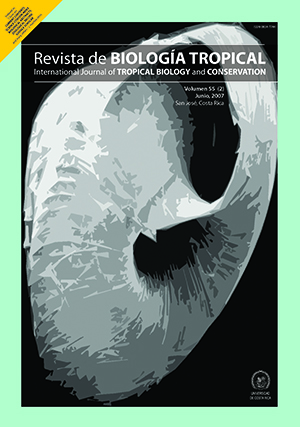Abstract
Habitat characteristics influencing behavior in animal species vary locally. The influence that a par-ticular environmental characteristic can have on a species depends not only on other variables, but on morpho-logical, physiological and social conditions of that species. in this study, developed from June 1996 to July 1997, i studied whether specific behaviors are related to particular distribution areas and environmental factors in the bottlenose (Tursiops truncatus) and the spotted dolphin (Stenella attenuata). The study area was covered along oblicuous linear transects, and the behavior of single groups was observed from 15 min to 5 h. Environmental factors such as depth, temperature, salinity and distance from shore, among others, were considered. For the bottlenose dolphin, foraging/feeding activities showed exclusive coincidence with river mouths, coral reef and mangrove areas, while social and milling activities where seen close to feeding areas. Traveling occurred along different points parallel to the coast, with a low percentage of cases across the gulf (16.56 %), suggesting that the bottlenose rarely crosses from one side to the other. in the spotted dolphin, several behaviors were observed simultaneously in the schools and it was not possible to associate areas with particular behaviors.The lack of significant relationships among activities and particular environmental variables (ANOvA tests) is attributed to three aspects: (a) transitions among activities generally occurred into a low variable area, (b) dolphins often traveled along large areas without changing activities and (c) environmental conditions in Golfo Dulce are homogeneous. in the two species the highest average in the number of individuals per group corresponded to the category of active socializing, followed by traveling, passive socializing and feeding. in the case of the bottlenose dolphin, the smallest group size was associated with feeding activities (ANOvA, F= 2.624, p=0.037, n= 156, df= 4), while in the spotted dolphin the smallest group size corresponded to milling activities (ANOvA, F= 3.817, p=0.009, n=51, df= 4).
##plugins.facebook.comentarios##

This work is licensed under a Creative Commons Attribution 4.0 International License.
Copyright (c) 2007 Revista de Biología Tropical


